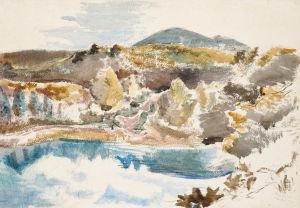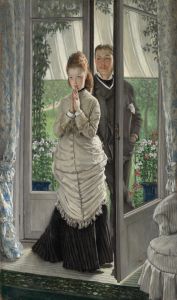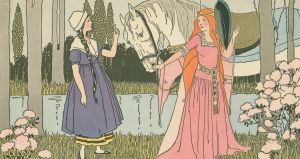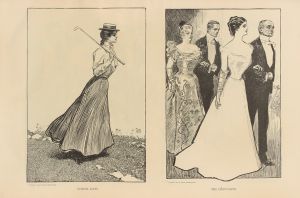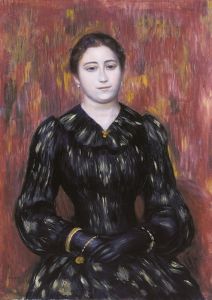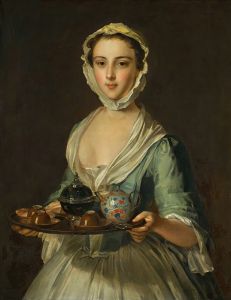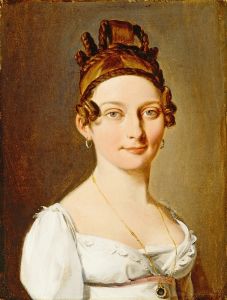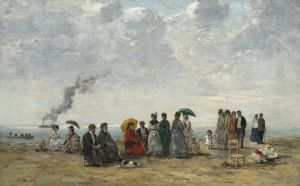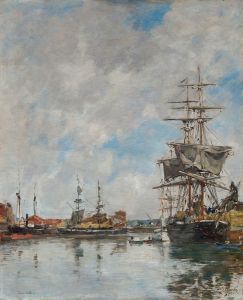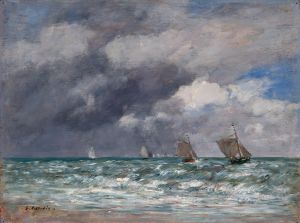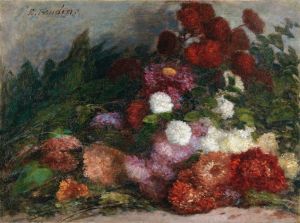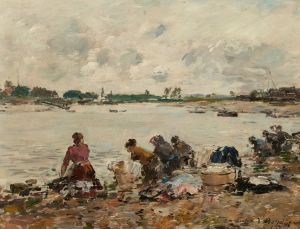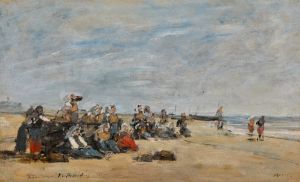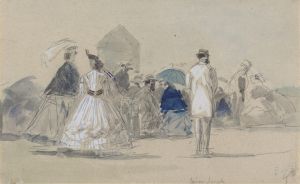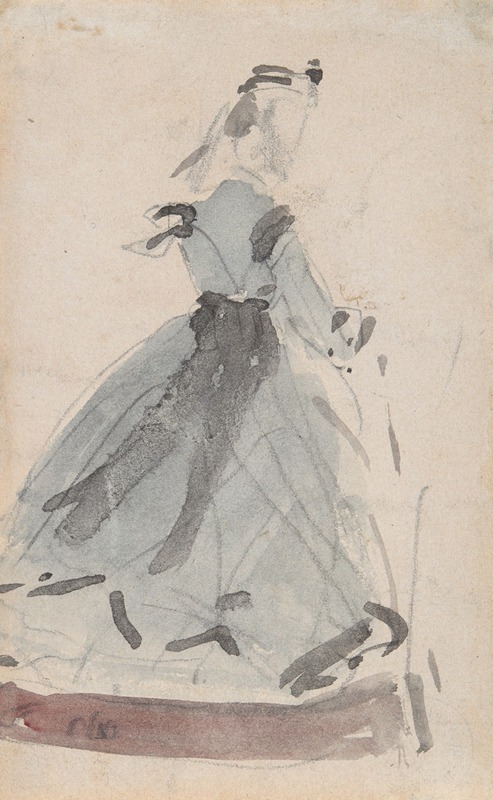
Lady in Fashionable Blue Gown
A hand-painted replica of Eugène Boudin’s masterpiece Lady in Fashionable Blue Gown, meticulously crafted by professional artists to capture the true essence of the original. Each piece is created with museum-quality canvas and rare mineral pigments, carefully painted by experienced artists with delicate brushstrokes and rich, layered colors to perfectly recreate the texture of the original artwork. Unlike machine-printed reproductions, this hand-painted version brings the painting to life, infused with the artist’s emotions and skill in every stroke. Whether for personal collection or home decoration, it instantly elevates the artistic atmosphere of any space.
Eugène Boudin, a prominent French painter, is renowned for his contributions to the development of Impressionism and his masterful depictions of seascapes and coastal scenes. Among his diverse body of work is the painting "Lady in Fashionable Blue Gown." This piece exemplifies Boudin's keen observation of contemporary life and his ability to capture the essence of the moment with a delicate touch.
Boudin was born on July 12, 1824, in Honfleur, France, and he spent much of his early life in the coastal regions of Normandy. His upbringing in this maritime environment profoundly influenced his artistic vision. Boudin's early exposure to the sea and the bustling life of the ports is reflected in his numerous paintings of beaches, harbors, and the people who frequented these locales.
"Lady in Fashionable Blue Gown" is a testament to Boudin's interest in the interplay between light, color, and fashion. Although specific details about the painting's creation, such as its exact date, are not widely documented, it is consistent with Boudin's style and thematic focus during the latter half of the 19th century. During this period, Boudin was particularly fascinated by the leisure activities of the bourgeoisie, often depicting elegantly dressed figures enjoying the seaside.
In this painting, Boudin captures a woman dressed in a fashionable blue gown, a color choice that highlights both the elegance of the attire and the artist's skillful use of color to convey mood and atmosphere. The gown's intricate details and the woman's poised demeanor suggest a moment of leisure and sophistication, characteristic of the social elite of the time. Boudin's brushwork is light and fluid, a technique that would later influence the Impressionists, including Claude Monet, who regarded Boudin as a mentor.
The setting of the painting, while not explicitly detailed, is likely a coastal scene, given Boudin's proclivity for such environments. The background, rendered with soft, atmospheric strokes, complements the figure's prominence in the composition, drawing the viewer's attention to the interplay between the subject and her surroundings. This approach reflects Boudin's ability to balance figure and landscape, a hallmark of his artistic style.
Boudin's work, including "Lady in Fashionable Blue Gown," is celebrated for its pioneering approach to plein air painting, a method that involves painting outdoors to capture the natural light and colors of the environment. This technique was revolutionary at the time and laid the groundwork for the Impressionist movement, which sought to depict the transient effects of light and atmosphere.
Throughout his career, Boudin exhibited his works in various salons and exhibitions, gaining recognition for his unique perspective and technical prowess. His paintings are now housed in numerous prestigious collections worldwide, including the Musée d'Orsay in Paris and the National Gallery of Art in Washington, D.C.
In summary, "Lady in Fashionable Blue Gown" by Eugène Boudin is a fine example of the artist's ability to capture the elegance and leisure of 19th-century bourgeois life through his innovative use of color and light. The painting not only reflects Boudin's artistic vision but also his significant influence on the Impressionist movement, marking him as a pivotal figure in the history of art.





